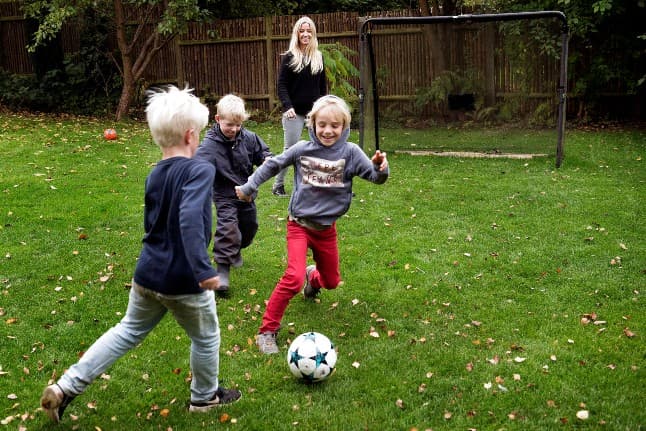Denmark gives green light to children's pyjama parties

Children in Denmark have been given the green light to play with as many friends as they like, for as long as they want, and even to hold pyjama parties.
In new guidelines issued on Wednesday, the Danish Health Authority said it was no longer advising that children have play dates with a maximum of two other children at one time, and said that friends could even stay overnight.
"We have chosen to move away from these strict requirements as to who you can play with and how many you can play with," Maria Koch Aabel, chief consultant at the authority told Danish state broadcaster DR.
"You can play with a few more friends at one time, and you can also have sleepovers."
"Children should do what they usually do with their friends: Play as much as they want."
READ ALSO:
-
Denmark halves distance advice to 1m as lockdown lifts
-
Second wave 'very unlikely' says Danish health chief
-
Denmark to lift most remaining lockdown measures on June 8
She said that while it was better for children to play outside if possible, it was OK to play inside on computers, so long as each child uses a separate keyboard and mouse.
The new guidelines came as Denmark has halved the recommended social distance from two metres to one metre, and after the return of children to schools and daycare has taken place without a big rise in the rate of infections.
What was important, she said, was that children continued to keep one metre's distance from one another, and that they wash their hands frequently.
Comments (1)
See Also
In new guidelines issued on Wednesday, the Danish Health Authority said it was no longer advising that children have play dates with a maximum of two other children at one time, and said that friends could even stay overnight.
"We have chosen to move away from these strict requirements as to who you can play with and how many you can play with," Maria Koch Aabel, chief consultant at the authority told Danish state broadcaster DR.
"You can play with a few more friends at one time, and you can also have sleepovers."
"Children should do what they usually do with their friends: Play as much as they want."
READ ALSO:
- Denmark halves distance advice to 1m as lockdown lifts
- Second wave 'very unlikely' says Danish health chief
- Denmark to lift most remaining lockdown measures on June 8
She said that while it was better for children to play outside if possible, it was OK to play inside on computers, so long as each child uses a separate keyboard and mouse.
The new guidelines came as Denmark has halved the recommended social distance from two metres to one metre, and after the return of children to schools and daycare has taken place without a big rise in the rate of infections.
What was important, she said, was that children continued to keep one metre's distance from one another, and that they wash their hands frequently.
Join the conversation in our comments section below. Share your own views and experience and if you have a question or suggestion for our journalists then email us at [email protected].
Please keep comments civil, constructive and on topic – and make sure to read our terms of use before getting involved.
Please log in here to leave a comment.